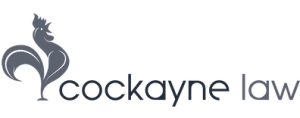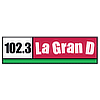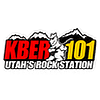What To Expect During an Insurance Company Investigation After a Car Accident?
When a crash occurs, insurers verify facts, review police and medical records, inspect vehicles, ask for statements, and check Utah’s no-fault rules. They compare fault, PIP payments, and damages, then make an offer or denial within legal time frames. Protect yourself with counsel.
If you were hit on Utah roads, the next call often comes from an insurance adjuster. Their job is to gather facts fast, measure fault, review your medical care, and control what they pay. Getting healthy, protecting your rights, and maintaining fairness are all your responsibilities.
Utah is a no fault state for medical bills at the start, which adds a few rules you should know before speaking with any insurer. This guide walks you through each step, from the first phone call to the last offer, with plain talk about Utah law and timelines. When questions pop up, a trusted advisor can help you avoid mistakes that cut your recovery.
Key Takeaways:
- Adjusters work to limit what they pay
- Your PIP pays first in Utah
- Do not guess or speculate in statements
- Give only accident-related record access
- Repairs must follow fair estimate rules
- Fault below 50% still allows pay
- Missed deadlines can sink strong claims
- Talk to a lawyer before you sign
First 48 Hours After You Report: What Really Happens?
Once a claim is opened, the insurer assigns an adjuster who logs your report, checks coverage, and starts a basic timeline. If you are filing against the other driver, remember you have no contract with that company. Their duty is to their policyholder, not you.
Utah’s Insurance Code also requires timely payment of valid claims and allows the Insurance Department to set rules for proof and time standards. These rules are meant to prevent open-ended delays, though the exact days depend on the type of benefit and the facts of your file.
Expect these first requests: a recorded or written statement, photos, the police report number, and basic medical details. It is also likely that the adjuster will ask you to have your vehicle inspected or sent to a preferred shop for an estimate.
- If you filed a first-party claim under your own policy, you have a duty to cooperate.
- If it is a third-party claim, you can slow down and speak with counsel first.
Utah’s own consumer page explains the difference between first-party and third-party claims so you understand who owes what to whom. Take your time, answer facts only, and avoid guessing. It is fine to say you will follow up after you check your notes.
The Proof Adjusters Gather and Why It Matters?
Adjusters confirm what happened, who caused it, and how you were hurt. Key proof includes the police report, scene photos, your statement, witness names, and the damage pattern on both cars. Officers must send crash reports to the state within 10 days after completing their investigation for qualifying crashes.
A driver involved in a collision with injuries, death, or property damage greater than $2,500 may also be required to file a report with the Department of Public Safety. That paper trail feeds directly into the insurer’s fault review.
They often compare your vehicle’s damage with your version of events and may pull repair estimates, medical charts, and billing codes to see if the treatment lines up with the crash. Some adjusters request phone logs, prior claims history, or to peek at public social media to test your story. Make sure you stay consistent.
Utah No Fault Rules: PIP, Medical Bills, and When You Can Sue?
Utah is a no fault state for the first layer of medical bills. Your Personal Injury Protection benefits pay initial care, no matter who caused the crash. Minimum PIP includes at least $3,000 in medical benefits per person. It also includes income loss at 85 percent up to $250 per week for up to 52 weeks, plus other listed benefits. If a PIP bill is not paid within 30 days after the insurer receives reasonable proof, it becomes overdue and interest can apply.
You may bring a claim for pain and suffering against the at-fault driver after you meet Utah’s injury threshold. You meet the threshold if your reasonable medical expenses are at least $3,000 or you suffered certain serious harms such as permanent disfigurement, dismemberment, permanent disability, or death.
Meeting this threshold opens the door to seek full damages from the person who caused the crash. The statute spells out both the threshold and the overdue-payment rule, which help keep treatment moving and protect your right to recover.
Tip: before you speak with any adjuster about symptoms or long-term limits, consider a quick call with a car accident attorney in Utah who can spot threshold issues early.
Statements, Medical Authorizations, and Your Privacy
Adjusters often ask for a recorded statement. According to Utah law, you do not have to provide the other driver’s insurer with a recorded statement. Your own policy may require reasonable cooperation, but you still get to set fair limits and prepare.
There are differences between rights and duties between first-party claims and third-party claims, according to Utah’s consumer guide. That means you can pause, ask for the questions in writing, or have a lawyer join you. It is recommended by many attorneys that you do not give a recorded statement to the other insurance company at all.
You may also receive a broad medical release. Do not sign a form that opens your entire history. Limit it to accident-related records and a sensible time window. You can send records yourself to keep control of what is shared. If your PIP insurer asks for an independent medical exam, that request usually comes from the policy language and Utah’s PIP rules.
Show up on time, be honest, and keep notes about the visit. If the adjuster requests an examination under oath, get legal help first. A short consult with a car accident lawyer in Utah before any of these steps can prevent avoidable mistakes.
Vehicle Damage Reviews and Repair Choices Under Utah Rules
For property damage, the insurer will inspect your vehicle, write an estimate, and may suggest shops. If the insurer prepares or approves an estimate, Utah rules require that estimate to reasonably reflect the cost to repair the damage. You are entitled to a copy. The insurer may list convenient repair shops, but the choice of where to repair is yours.
Utah law also limits how insurers and shops handle non-OEM aftermarket parts. An insurer cannot specify non-OEM crash parts without giving written notice that the parts were not made by the vehicle maker. Repair facilities must also give written notice before installing those parts.
Non-OEM parts must be marked by the manufacturer and identified on the estimate when practicable. These rules promote informed choices and help ensure parts fit and perform as expected. If a dispute arises over repair scope, get the estimate in writing, take clear photos, and ask for a re-inspection. You can also request that the insurer explain any price cuts line by line.
How Long Do Investigations Take and What Deadlines Matter?
Timing depends on the benefit. The insurer becomes liable for overdue payments if the insurance company fails to pay the claim within 30 days after receiving reasonable proof. Interest can apply to late PIP payments. Utah’s general claim practices law also requires timely payment of valid claims and allows the Insurance Department to set standards. For certain health and income replacement claims, rules provide decision windows and notice duties so claimants are not left waiting without updates.
Other key dates: most injury lawsuits from car crashes in Utah must be filed within four years of the accident date, though some claims have shorter limits. In the case of a qualifying crash, officers must submit their reports within 10 days, and the state can require drivers to submit their reports within 10 days if injuries occur or if $2,500 in property damage is involved.
Do not cut it close. An accident lawyer in Utah can push for answers if delays persist or requests seem unfair. They can also help you file a complaint with the Utah Insurance Department.
Hire the Finest Car Accident Injury Lawyer in Utah
When an insurance company starts asking for statements, broad authorizations, or a medical exam, you want a steady guide. Attorney Chris Cockayne and the team at Cockayne Law have built a practice focused on real people hurt in traffic crashes across the state. They know the playbook adjusters use and the local rules that govern PIP, parts, and prompt pay. They answer your questions in plain talk, set a plan for medical records, and stand with you on calls so nothing is taken out of context.
Your health and claim are their first priorities from the moment you hire them. They gather police reports fast, lock in witness notes, and line up the right experts when needed. If the insurer schedules an exam or an examination under oath, they prepare you step by step. If the offer is light, they show the proof that moves numbers. When you need a car accident lawyer in Utah who treats you like family, reach out and learn how the process works. If you prefer, ask for a quick review before you give any statement.
Final Thoughts
Insurance investigations are built on facts, timelines, and rules. Your part is to get care, keep records, and share only what is needed. Utah’s no fault system pays early medical bills, but the threshold and fault rules shape the rest of your claim. Move with care, answer truthfully, and protect your privacy. If something feels rushed or confusing, pause and get advice. The time you will save by speaking with a trusted car accident advocate can be the difference between months of stress and recovering the full value of your loss.
FAQs
What bills does Utah PIP pay after a crash?
At minimum, PIP pays at least $3,000 per person for medical care. It may also cover a portion of lost income and some household services and funeral costs, as listed in the statute.
When can I seek pain and suffering from the at-fault driver?
You can pursue these damages after you reach $3,000 in reasonable medical expenses or if you suffered serious listed injuries like disfigurement, disability, or death in the family.
Can the insurer force me to use non-OEM parts for repairs?
Not without written notice. Utah law requires disclosure before an insurer specifies non-OEM crash parts, and shops must disclose before installing them.
Who chooses the repair shop?
You do. If the insurer writes or approves an estimate, it must give you a copy. It can suggest shops, but the choice remains yours under Utah rules.
What is Utah’s rule on shared fault?
If you do not have more than 50% of the fault, then you can be compensated. Your recovery is reduced by your share. At 50% or more, you recover nothing.
Is it necessary for me to report the crash to the police?
Law enforcement files crash reports within 10 days for qualifying crashes. The state can require drivers to file a report when there is injury, death, or $2,500 or more in damage.
What if the insurer keeps delaying decisions or payment?
Utah law requires timely handling of valid claims. For health and income benefits, rules set decision windows and notice duties. Keep all letters and ask for updates in writing. Consider help from a car accident attorney in Utah if delays persist.









